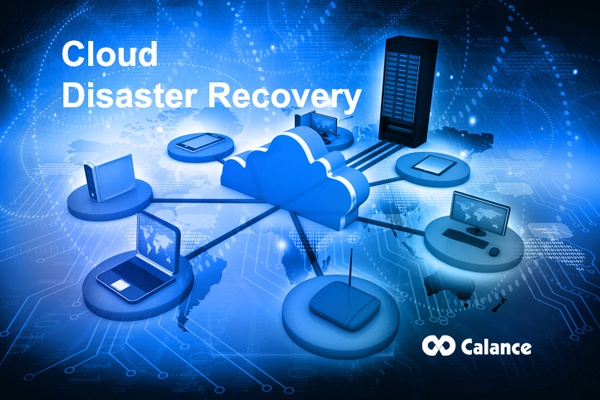Understanding Backup and Disaster Recovery
Backup and disaster recovery (BDR) is a set of strategies and technologies designed to protect data and systems from unexpected events such as hardware failures, natural disasters, and cyber attacks. The primary goal of BDR is to ensure the continuity of business operations and minimize downtime in the event of a disruption. Traditionally, BDR has been implemented using on-premises solutions, such as tape backups and secondary data centers. However, with the advent of cloud computing, BDR in the cloud has become an increasingly popular option for businesses of all sizes.
Cloud-based BDR offers several advantages over traditional on-premises solutions. For one, it provides scalability and flexibility, allowing businesses to easily adjust their BDR strategy as their data and application needs change. Additionally, cloud-based BDR is often more cost-effective than on-premises solutions, as it eliminates the need for expensive hardware and maintenance costs. Furthermore, cloud-based BDR can provide faster recovery times in the event of a disaster, as data and applications can be quickly restored from the cloud.
At its core, BDR involves making copies of data and applications and storing them in a secure location. This can be done using a variety of techniques, such as snapshot-based backups, replication, and archiving. The key is to ensure that the backups are comprehensive, up-to-date, and easily recoverable in the event of a disaster. Additionally, BDR strategies should include plans for testing and validating the backups, as well as procedures for recovering data and applications in the event of a disruption.
In summary, BDR is a critical component of any business’s IT strategy, and cloud-based BDR offers several advantages over traditional on-premises solutions. By implementing a comprehensive BDR strategy in the cloud, businesses can ensure the continuity of their operations, protect their data and applications from unexpected events, and minimize downtime in the event of a disaster.

The Role of the Cloud in Backup and Disaster Recovery
In today’s digital age, businesses rely heavily on data and applications to operate and serve their customers. However, this also means that data and applications are at risk of being lost or disrupted due to unexpected events such as hardware failures, natural disasters, and cyber attacks. This is where backup and disaster recovery (BDR) comes in, and the cloud has become an essential tool for BDR.
Traditionally, BDR has been implemented using on-premises solutions, such as tape backups and secondary data centers. However, these solutions can be expensive to maintain and may not provide the scalability and flexibility needed to keep up with changing business needs. This is where cloud-based BDR comes in, offering several advantages over traditional on-premises solutions.
One of the primary benefits of cloud-based BDR is scalability. With the cloud, businesses can easily scale their BDR strategy up or down as their data and application needs change. This is especially important for businesses that experience spikes in data usage or have seasonal fluctuations in their operations. Additionally, cloud-based BDR can provide flexibility, allowing businesses to choose the level of service and features that best meet their needs.
Another advantage of cloud-based BDR is cost-effectiveness. With on-premises solutions, businesses must invest in expensive hardware and maintenance costs. In contrast, cloud-based BDR eliminates the need for these upfront costs, as businesses only pay for the resources they use. This can result in significant cost savings over time, especially for small and medium-sized businesses.
Cloud-based BDR can also provide faster recovery times in the event of a disaster. With on-premises solutions, restoring data and applications can take hours or even days. In contrast, cloud-based BDR can provide near-instant recovery times, minimizing downtime and reducing the impact on business operations.
In summary, the cloud has become an essential tool for backup and disaster recovery, providing scalability, flexibility, and cost-effectiveness compared to traditional on-premises solutions. By implementing a cloud-based BDR strategy, businesses can ensure the continuity of their operations, protect their data and applications from unexpected events, and minimize downtime in the event of a disaster.

Benefits of Cloud-Based Backup and Disaster Recovery
Backup and disaster recovery (BDR) is a critical component of any business’s IT strategy. With the increasing reliance on digital systems and data, the cost of downtime and data loss can be significant. Cloud-based BDR solutions offer several advantages over traditional on-premises solutions, including automatic data replication, fast recovery times, and reduced capital and operational expenses.
Automatic Data Replication
One of the primary benefits of cloud-based BDR is automatic data replication. With traditional on-premises solutions, data backups are often performed manually or on a scheduled basis. This can lead to delays in backup times, increasing the risk of data loss. Cloud-based BDR solutions, on the other hand, can automatically replicate data in real-time, ensuring that the most up-to-date data is always backed up.
Fast Recovery Times
Another advantage of cloud-based BDR is fast recovery times. In the event of a disaster or data loss, restoring data from an on-premises solution can take hours or even days. Cloud-based BDR solutions, however, can provide near-instant recovery times, minimizing downtime and reducing the impact on business operations. This is especially important for businesses that rely heavily on digital systems and data, such as e-commerce companies or financial institutions.
Reduced Capital and Operational Expenses
Cloud-based BDR solutions can also provide significant cost savings compared to traditional on-premises solutions. With on-premises solutions, businesses must invest in expensive hardware and maintenance costs. Cloud-based BDR solutions, on the other hand, eliminate the need for these upfront costs, as businesses only pay for the resources they use. This can result in significant cost savings over time, especially for small and medium-sized businesses.
Scalability and Flexibility
Cloud-based BDR solutions also offer scalability and flexibility. With on-premises solutions, businesses must invest in hardware and infrastructure that meets their current needs. However, as their data and application needs change, they may need to invest in additional hardware or upgrades. Cloud-based BDR solutions, however, can easily scale up or down as needed, providing businesses with the flexibility to meet changing needs without significant capital investments.
Data Security and Compliance
Cloud-based BDR solutions can also provide enhanced data security and compliance. With on-premises solutions, businesses are responsible for managing and maintaining their own security measures. However, cloud-based BDR solutions often include advanced security features, such as encryption, access controls, and regular security updates. This can help businesses meet compliance requirements and reduce the risk of data breaches.
Training and Support
Finally, cloud-based BDR solutions often include training and support services. This can help businesses ensure that their staff is trained on recovery procedures and that the solution is properly configured and maintained. This can help reduce the risk of human error and ensure that the solution is always up-to-date and functioning properly.
In conclusion, cloud-based backup and disaster recovery solutions offer several advantages over traditional on-premises solutions. With automatic data replication, fast recovery times, reduced capital and operational expenses, scalability and flexibility, enhanced data security and compliance, and training and support services, cloud-based BDR solutions can help businesses protect their data and systems from unexpected events and minimize downtime in the event of a disaster.
Real-World Examples of Cloud-Based Backup and Disaster Recovery
Cloud-based backup and disaster recovery has become an essential tool for businesses of all sizes. By leveraging the scalability, flexibility, and cost-effectiveness of the cloud, businesses can protect their data and systems from unexpected events such as hardware failures, natural disasters, and cyber attacks. Here are some real-world examples of companies that have successfully implemented cloud-based backup and disaster recovery:
Example 1: A Large Financial Institution
A large financial institution implemented a cloud-based backup and disaster recovery solution to protect its mission-critical data and applications. With petabytes of data to manage, the institution required a solution that could scale quickly and cost-effectively. By using a cloud-based solution, the institution was able to reduce its capital and operational expenses while ensuring fast recovery times and enhanced data security.
Example 2: A Healthcare Provider
A healthcare provider implemented a cloud-based backup and disaster recovery solution to meet regulatory compliance requirements and protect patient data. With strict regulations around data privacy and security, the provider required a solution that could provide advanced security features and regular security updates. By using a cloud-based solution, the provider was able to meet compliance requirements and reduce the risk of data breaches.
Example 3: A Small E-Commerce Company
A small e-commerce company implemented a cloud-based backup and disaster recovery solution to protect its digital systems and data from unexpected downtime. With a limited IT budget, the company required a solution that was cost-effective and easy to manage. By using a cloud-based solution, the company was able to reduce its capital and operational expenses while ensuring fast recovery times and minimizing downtime in the event of a disaster.
Challenges and Considerations
While cloud-based backup and disaster recovery offers many benefits, there are also potential challenges and considerations to keep in mind. These include data transfer costs, network latency, and vendor lock-in. To overcome these challenges, businesses should carefully assess their needs and select a cloud provider that can meet their specific requirements. It’s also important to monitor and test the solution regularly to ensure that it’s functioning properly and meeting business needs.
Best Practices
To manage and maintain a cloud-based backup and disaster recovery solution, businesses should follow best practices such as monitoring and testing the solution regularly, ensuring data security and compliance, and training staff on recovery procedures. By following these best practices, businesses can ensure that their cloud-based backup and disaster recovery solution is always up-to-date and functioning properly, providing them with the protection they need in the event of an unexpected disaster.
Conclusion
Cloud-based backup and disaster recovery is an essential tool for businesses looking to protect their data and systems from unexpected events. By leveraging the scalability, flexibility, and cost-effectiveness of the cloud, businesses can ensure fast recovery times, reduced capital and operational expenses, and enhanced data security. With real-world examples of successful implementation and best practices for management and maintenance, businesses can confidently adopt cloud-based backup and disaster recovery as part of their IT strategy.
How to Implement Cloud-Based Backup and Disaster Recovery
Implementing cloud-based backup and disaster recovery can provide businesses with a range of benefits, including scalability, flexibility, and cost-effectiveness. However, to ensure a successful implementation, businesses should follow a series of steps to assess their needs, select a cloud provider, and configure and test the solution. Here’s a closer look at the process:
Assess Business Needs
The first step in implementing cloud-based backup and disaster recovery is to assess the business’s needs. This includes identifying the critical data and systems that need to be protected, as well as the potential risks and threats to those assets. By understanding the business’s needs, organizations can select a cloud provider and solution that meets their specific requirements.
Select a Cloud Provider
Once the business’s needs have been assessed, the next step is to select a cloud provider. When evaluating potential providers, businesses should consider factors such as cost, scalability, security, and compliance. It’s also important to ensure that the provider has a proven track record of delivering reliable and secure cloud-based backup and disaster recovery solutions.
Configure and Test the Solution
After selecting a cloud provider, the next step is to configure and test the solution. This includes setting up automatic data replication, configuring recovery procedures, and testing the solution to ensure that it’s functioning properly. By testing the solution, businesses can identify any potential issues or weaknesses and make any necessary adjustments before a disaster strikes.
Monitor and Maintain the Solution
Once the cloud-based backup and disaster recovery solution has been implemented, it’s important to monitor and maintain the solution to ensure that it continues to meet the business’s needs. This includes regularly testing the solution, ensuring data security and compliance, and training staff on recovery procedures. By staying on top of maintenance, businesses can ensure that their cloud-based backup and disaster recovery solution is always up-to-date and functioning properly.
Conclusion
Implementing cloud-based backup and disaster recovery can provide businesses with a range of benefits, including scalability, flexibility, and cost-effectiveness. By following a series of steps, including assessing business needs, selecting a cloud provider, and configuring and testing the solution, businesses can ensure a successful implementation. With a reliable and secure cloud-based backup and disaster recovery solution in place, businesses can protect their data and systems from unexpected events and minimize downtime in the event of a disaster.

Best Practices for Managing and Maintaining Cloud-Based Backup and Disaster Recovery
Implementing cloud-based backup and disaster recovery is an important step in protecting a business’s data and systems from unexpected events. However, to ensure the long-term success of the solution, it’s important to follow best practices for managing and maintaining the system. Here are some key considerations:
Monitor and Test the Solution
One of the most important best practices for managing and maintaining cloud-based backup and disaster recovery is to regularly monitor and test the solution. This includes checking the status of backups, testing data restores, and verifying that recovery procedures are functioning properly. By regularly testing the solution, businesses can identify and address any potential issues before they become major problems.
Ensure Data Security and Compliance
Another key consideration for managing and maintaining cloud-based backup and disaster recovery is ensuring data security and compliance. This includes implementing strong access controls, encrypting data in transit and at rest, and regularly reviewing security logs. By ensuring data security and compliance, businesses can protect their data from unauthorized access and maintain regulatory compliance.
Train Staff on Recovery Procedures
To ensure a successful recovery in the event of a disaster, it’s important to train staff on recovery procedures. This includes providing regular training and updates on recovery procedures, as well as conducting regular drills to test staff readiness. By training staff on recovery procedures, businesses can minimize downtime and ensure a smooth recovery process.
Regularly Review and Update the Solution
As business needs and technology evolve, it’s important to regularly review and update the cloud-based backup and disaster recovery solution. This includes assessing the business’s changing needs, evaluating new solutions and technologies, and making any necessary adjustments to the solution. By regularly reviewing and updating the solution, businesses can ensure that their cloud-based backup and disaster recovery solution remains effective and up-to-date.
Backup and Disaster Recovery in the Cloud: A Smart Investment
Implementing and managing cloud-based backup and disaster recovery is a smart investment for businesses of all sizes. By following best practices for managing and maintaining the solution, businesses can ensure that their data and systems are protected from unexpected events, minimize downtime, and maintain regulatory compliance. With a reliable and secure cloud-based backup and disaster recovery solution in place, businesses can focus on what they do best: serving their customers and growing their business.

Challenges and Considerations for Backup and Disaster Recovery in the Cloud
While cloud-based backup and disaster recovery offers many benefits, it’s important to be aware of the potential challenges and considerations. Here are some key considerations for businesses looking to implement cloud-based backup and disaster recovery:
Data Transfer Costs
One of the potential challenges of cloud-based backup and disaster recovery is data transfer costs. Depending on the cloud provider and the amount of data being transferred, data transfer costs can add up quickly. To minimize data transfer costs, businesses should consider implementing data deduplication and compression, as well as scheduling backups during off-peak hours.

The Future of Backup and Disaster Recovery in the Cloud
As businesses continue to rely on digital technologies, the need for robust backup and disaster recovery solutions becomes increasingly important. Cloud-based backup and disaster recovery is poised to play a critical role in the future of data protection, with several emerging trends and developments:
Adoption of Artificial Intelligence and Machine Learning
Artificial intelligence (AI) and machine learning (ML) are being increasingly used in cloud-based backup and disaster recovery solutions to automate and optimize data protection processes. AI and ML can help identify patterns and anomalies in data, enabling businesses to proactively detect and respond to potential threats before they cause damage. Additionally, AI and ML can help automate data recovery processes, reducing recovery times and minimizing downtime.
Automation and Orchestration
Automation and orchestration are becoming increasingly important in cloud-based backup and disaster recovery. Automation can help reduce the manual effort required to manage and maintain data protection processes, while orchestration can help streamline and optimize disaster recovery processes. By automating and orchestrating disaster recovery processes, businesses can reduce recovery times, minimize downtime, and ensure business continuity.
Integration with Edge Computing and IoT
As edge computing and the Internet of Things (IoT) continue to grow, there is a need for backup and disaster recovery solutions that can protect data generated at the edge. Cloud-based backup and disaster recovery solutions can help businesses protect data generated at the edge, enabling them to recover data and systems in the event of a disaster. Additionally, cloud-based backup and disaster recovery solutions can help businesses manage and maintain edge computing and IoT devices, reducing the complexity and cost of managing these devices.
Conclusion
Cloud-based backup and disaster recovery is an essential tool for businesses looking to protect their data and systems from unexpected events. With the adoption of AI, ML, automation, and orchestration, cloud-based backup and disaster recovery solutions are becoming increasingly sophisticated, enabling businesses to proactively detect and respond to potential threats, reduce recovery times, and minimize downtime. As businesses continue to rely on digital technologies, the need for robust backup and disaster recovery solutions will only become more critical. By adopting cloud-based backup and disaster recovery solutions, businesses can ensure business continuity, protect their data and systems, and stay ahead of the curve in an ever-evolving digital landscape.

